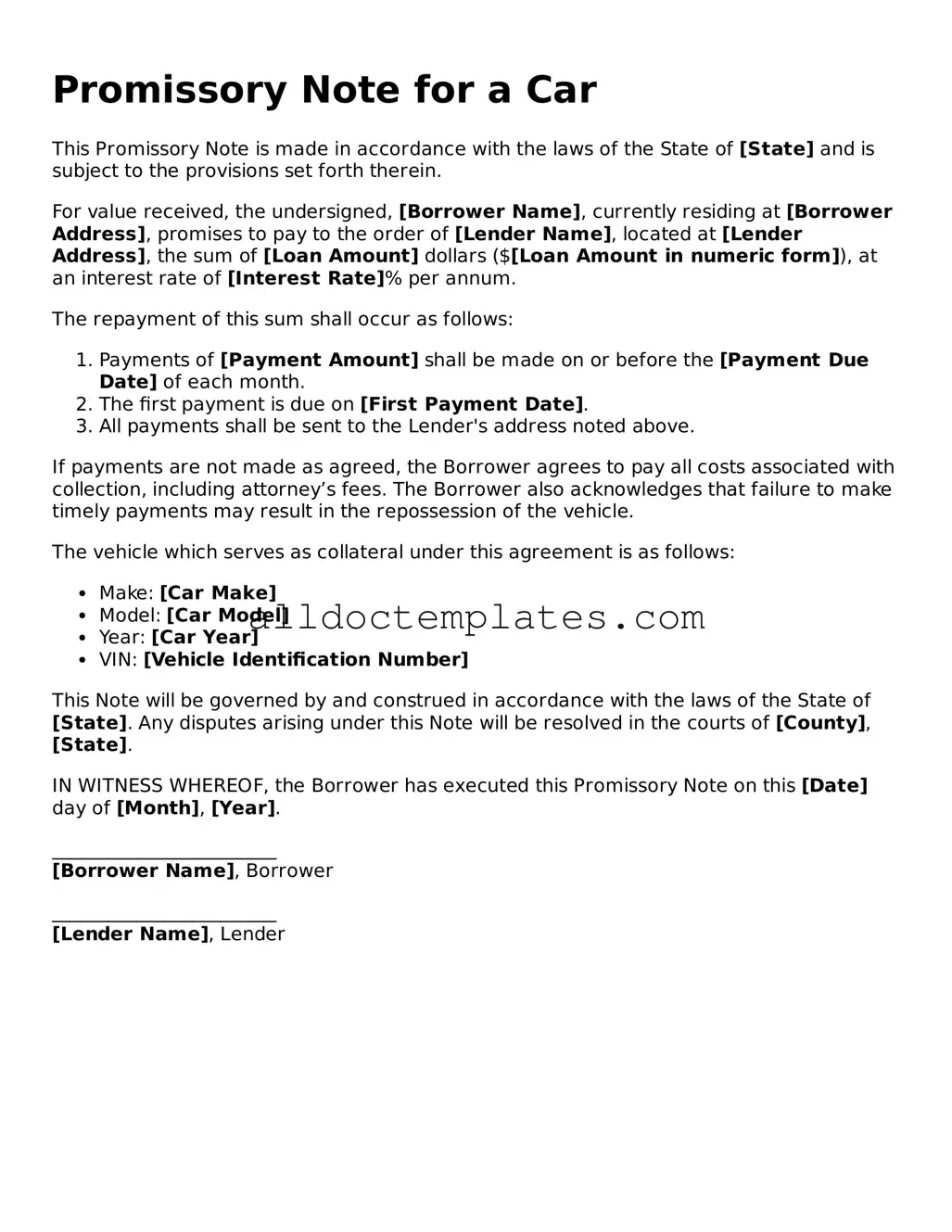Promissory Note for a Car
This Promissory Note is made in accordance with the laws of the State of [State] and is subject to the provisions set forth therein.
For value received, the undersigned, [Borrower Name], currently residing at [Borrower Address], promises to pay to the order of [Lender Name], located at [Lender Address], the sum of [Loan Amount] dollars ($[Loan Amount in numeric form]), at an interest rate of [Interest Rate]% per annum.
The repayment of this sum shall occur as follows:
- Payments of [Payment Amount] shall be made on or before the [Payment Due Date] of each month.
- The first payment is due on [First Payment Date].
- All payments shall be sent to the Lender's address noted above.
If payments are not made as agreed, the Borrower agrees to pay all costs associated with collection, including attorney’s fees. The Borrower also acknowledges that failure to make timely payments may result in the repossession of the vehicle.
The vehicle which serves as collateral under this agreement is as follows:
- Make: [Car Make]
- Model: [Car Model]
- Year: [Car Year]
- VIN: [Vehicle Identification Number]
This Note will be governed by and construed in accordance with the laws of the State of [State]. Any disputes arising under this Note will be resolved in the courts of [County], [State].
IN WITNESS WHEREOF, the Borrower has executed this Promissory Note on this [Date] day of [Month], [Year].
________________________
[Borrower Name], Borrower
________________________
[Lender Name], Lender
